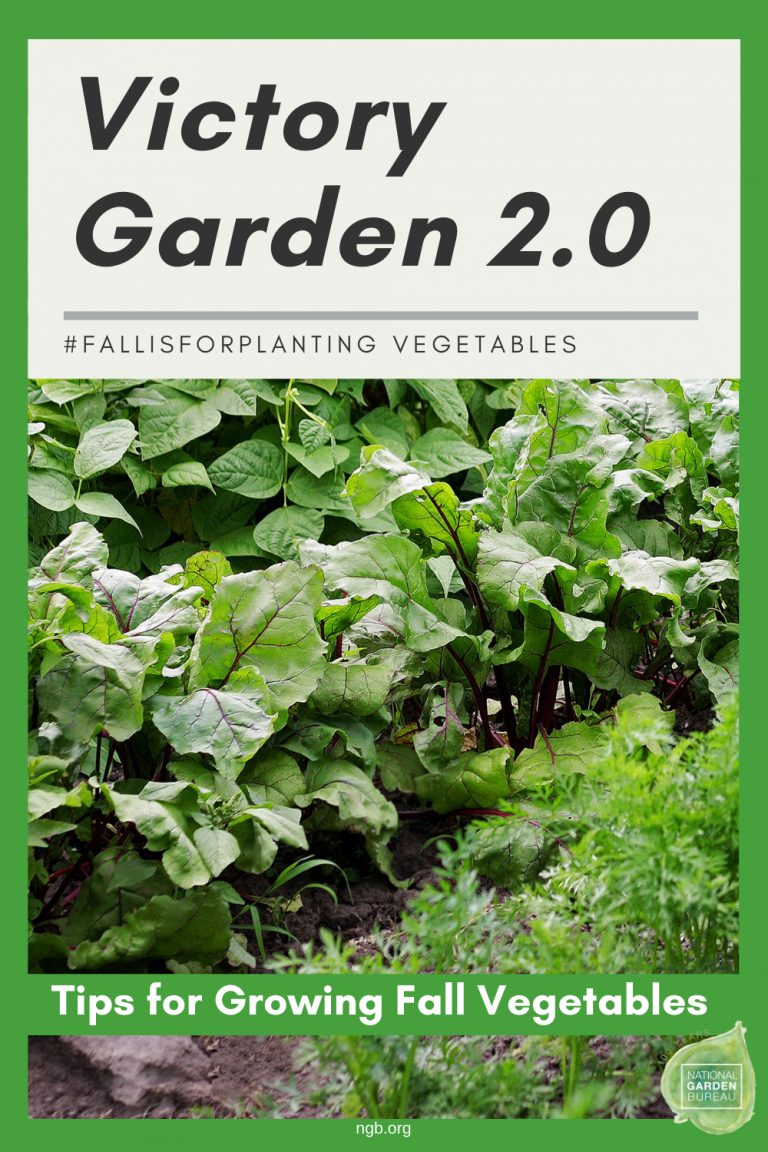Why Continue Your Victory Garden 2.0 into the Fall …
Hopefully, you are now harvesting those delicious tomatoes, peppers, and summer squash from your Victory Garden 2.0. What a great and satisfying feeling!
As the cool autumn season begins its descent, you may think that the gardening season is over until next summer. But not so fast…Fall is the perfect time of year for planting cool weather crops!
Fall planting not only extends your garden season but also brings on those delicious crops that do best in the cooler weather, often tasting their best after a frost or two. There are usually fewer pests to worry about, less watering, and less sweat in the cooler fall months!
So get ready to plant your Victory Garden 2.0 Fall Edition!
Tips To Planning Your Fall Vegetable Victory Garden 2.0
-
Find your average first frost date.
Take a moment and check out this Average First Frost Map to see when you can expect your area’s first frost. This way you can decide when to plant your fall crops, if you have the time to plant, and if you will need additional protection.
-
Check “days to harvest” on each crop.
If you are planting seeds, the package will include “days to harvest” information. Check this number and count back from your average first frost to see if you really have time to plant and harvest the vegetables. Another way is to check this handy Fall-Harvest Planting Calculator that calculates from your “frost-free days” and tells you when to plant typical fall crops in your area.
-
Make some room in your garden.
Remove those spent vegetable plants that have stopped producing, or are diseased, to give your garden some additional room. Try Foodscaping and add your fall crops to your landscape by removing spent annuals or cutting back leggy perennials for space. Kale, spinach, mustard, and many fall crops will bring a new fall-inspired look to your landscape or even containers.
-
Look for plants too.
Many garden centers will now have plants in stock for fall planting. In addition to starting your fall garden from seed, look to purchase some fall plants as well. Brussel sprouts, broccoli, and cauliflower are often easier to grow and mature from transplants rather than seeds.
-
Water and keep cool.
One of the biggest challenges for starting your fall vegetable garden in the hottest part of the year is keeping the seeds watered and cool. Remember to keep the seeds moist by watering often and be sure to put down mulch. If the heat and sun get too extreme, add a lightweight summer fabric like this from NGB member Gardener’s Supply Company.
 Don’t be afraid to get rid of non-performing or underperforming plants. Toss them to make room for new plantings and you’ll be rewarded with fresh and tasty vegetables this fall.
Don’t be afraid to get rid of non-performing or underperforming plants. Toss them to make room for new plantings and you’ll be rewarded with fresh and tasty vegetables this fall.
12 Fall Vegetable Crops to Plant for a Delicious Harvest
Beet 5 color Gourmet Blend
Harvest: 52-60 days
Bok Choi Bopak
Harvest: 60 days
Cucumber Green Light
Harvest: 37-42 days
Greens Cheap Frill Mix
Harvest: 21 days
Kale Garden Blend
Harvest: 60-80 days
Kale Redbor
Harvest: 50 days
Kohlrabi Beas
Harvest: 42 days
Lettuce Blushed Butter Oak
Harvest: 50 days
Lettuce Jara
Harvest: 55 days
Mustard Osaka Purple
Harvest: 21 – 45 days
Radish Philadelphia White Window Box
Harvest: 30 days
Spinach Tundra
Harvest: 40 days
Additional posts about Victory Garden 2.0 #FallisforPlanting
“This post is provided as an educational/inspirational service of the National Garden Bureau and our members. Please credit and link to National Garden Bureau and author member when using all or parts of this article.”













